
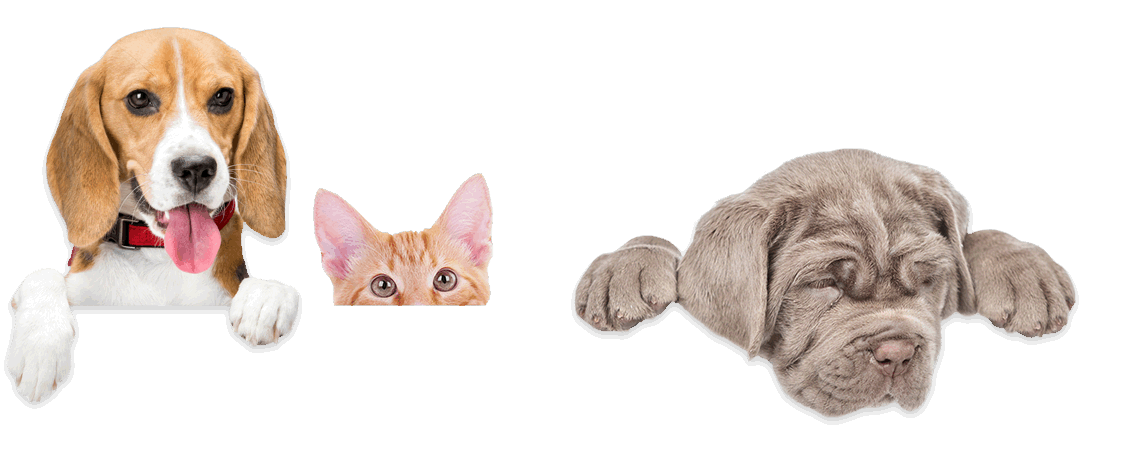
Discover the purr-fect selection of wet cat food with Naturo's Natural Cat Food range. Crafted to meet all your feline's nutritional needs.
Our natural cat food is a blend of high-quality, all-natural ingredients, providing essential vitamins, minerals, and oils for overall well-being, with no artificial colours, flavours, or preservatives—ideal for your pet.
For felines with specific dietary preferences, opt for Naturo Grain Free Cat Food, offering seven pate pouches and a new Poultry Selection variety pack all with 80% premium meat content, enriched with Taurine for heart and vision support. Wheat-free and gluten-free, catering to dietary preferences and sensitivities.
Join the Naturo family for exceptional wet cat food options. Ensure your cat's happiness and well-being with our quality, natural, and grain-free cat nutrition, conveniently delivered to your doorstep through our subscribe and save service.
Looking to find out more about our Wet Cat Food range? Find our FAQs below!
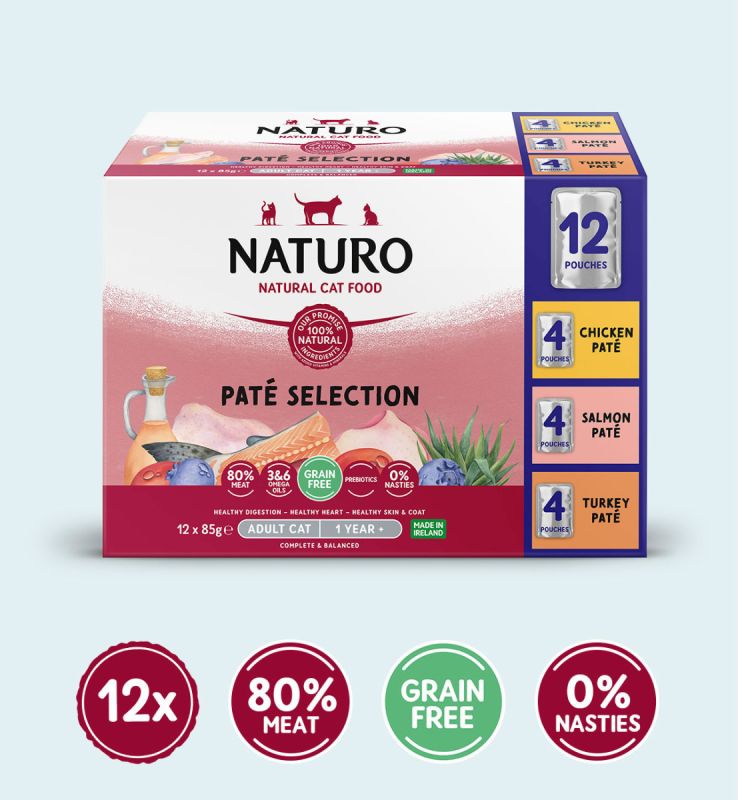
Variety
Naturo Cat Paté Pouch Selection
85g x 12
Subscription Product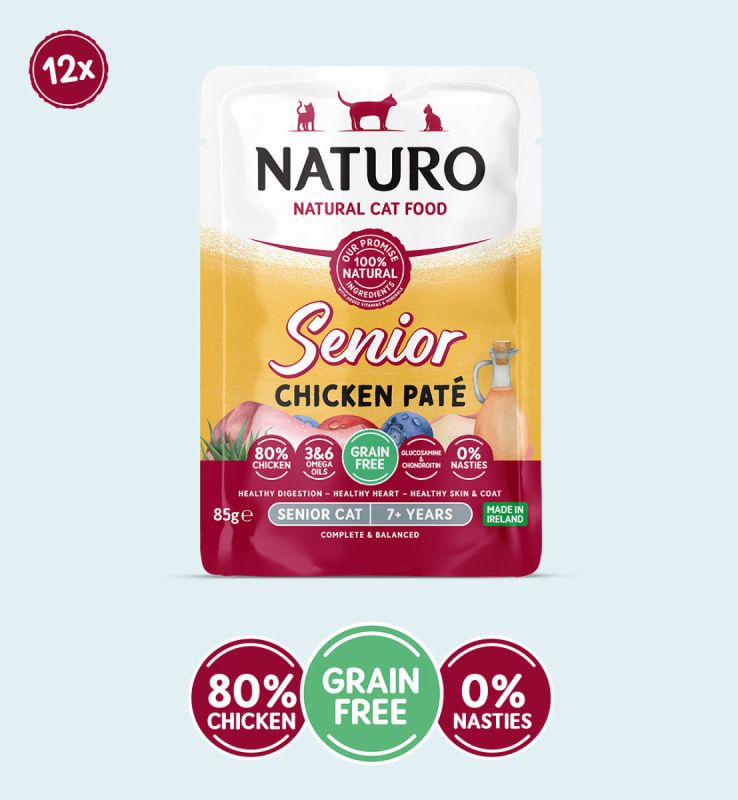
Chicken
Naturo Cat Grain Free Senior Chicken Paté Pouch
85g x 12
Subscription Product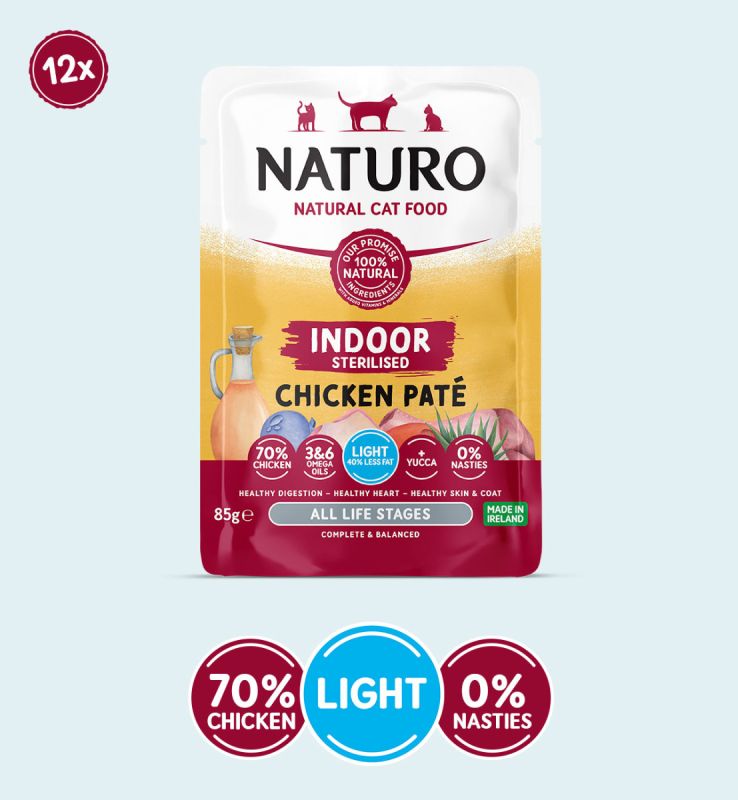
Chicken
Naturo Cat Grain Free Indoor Sterilised Chicken Paté Pouch
85g x 12
Subscription Product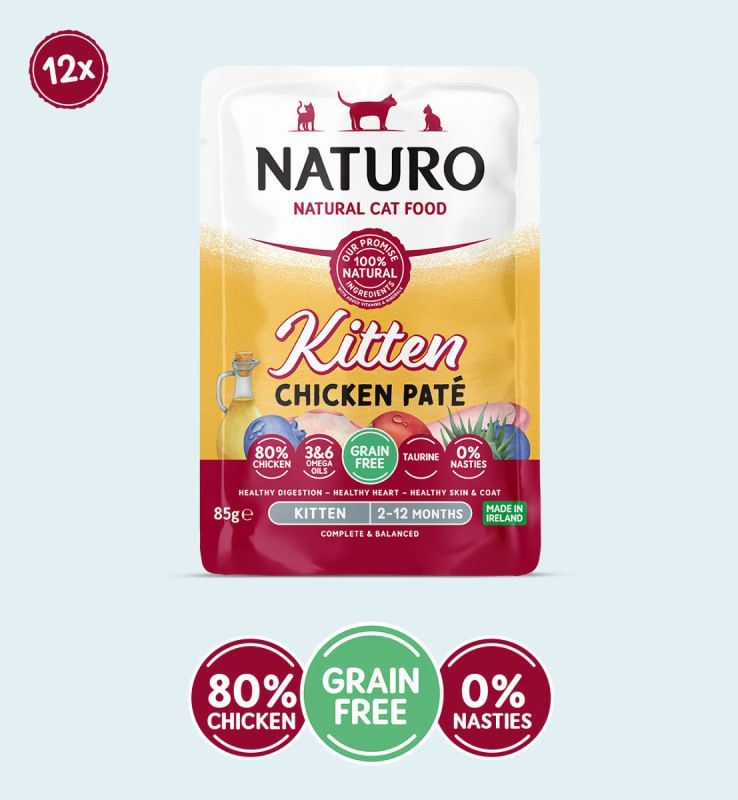
Chicken
Naturo Cat Grain Free Kitten Chicken Paté Pouch
85g x 12
Subscription Product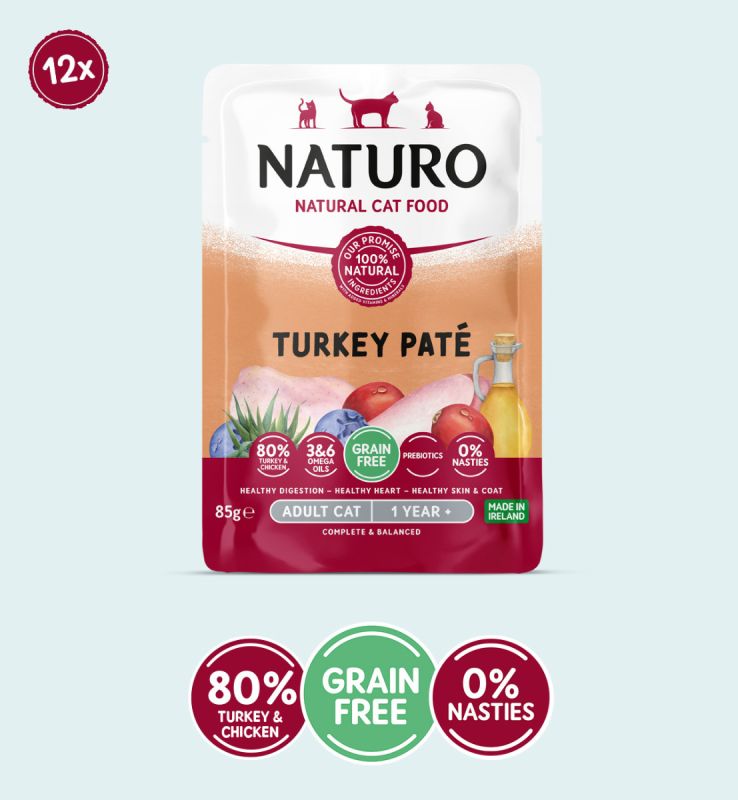
Turkey • Chicken
Naturo Cat Turkey Paté Pouch
85g x 12
Subscription Product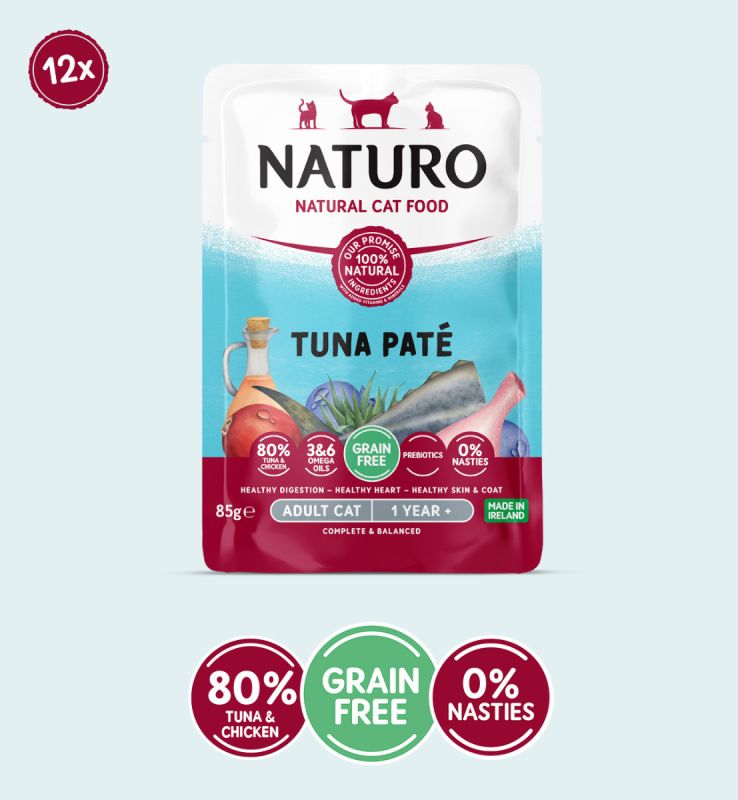
Tuna • Chicken
Naturo Cat Tuna Paté Pouch
85g x 12
Subscription Product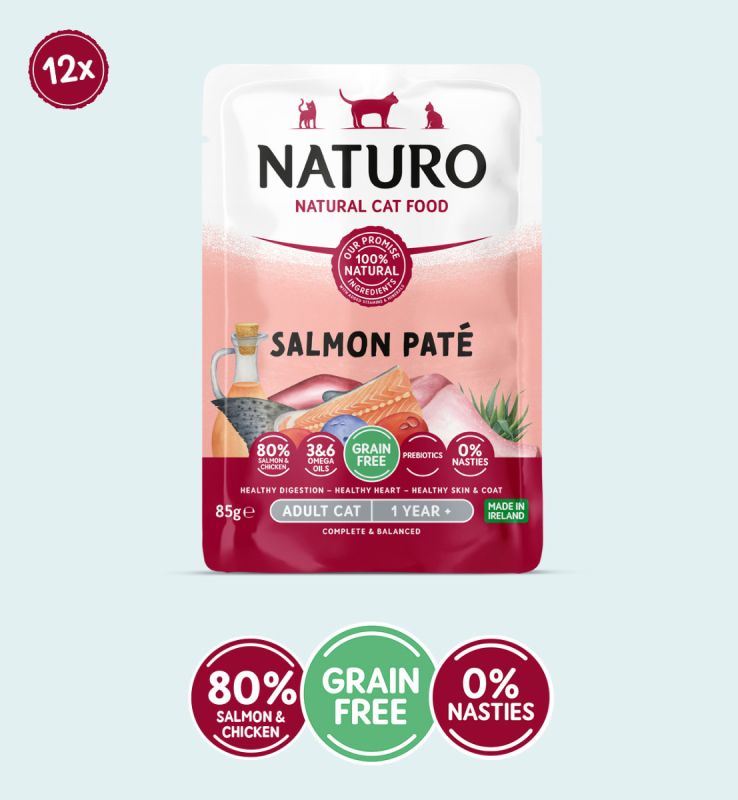
Salmon • Chicken
Naturo Cat Salmon Paté Pouch
85g x 12
Subscription Product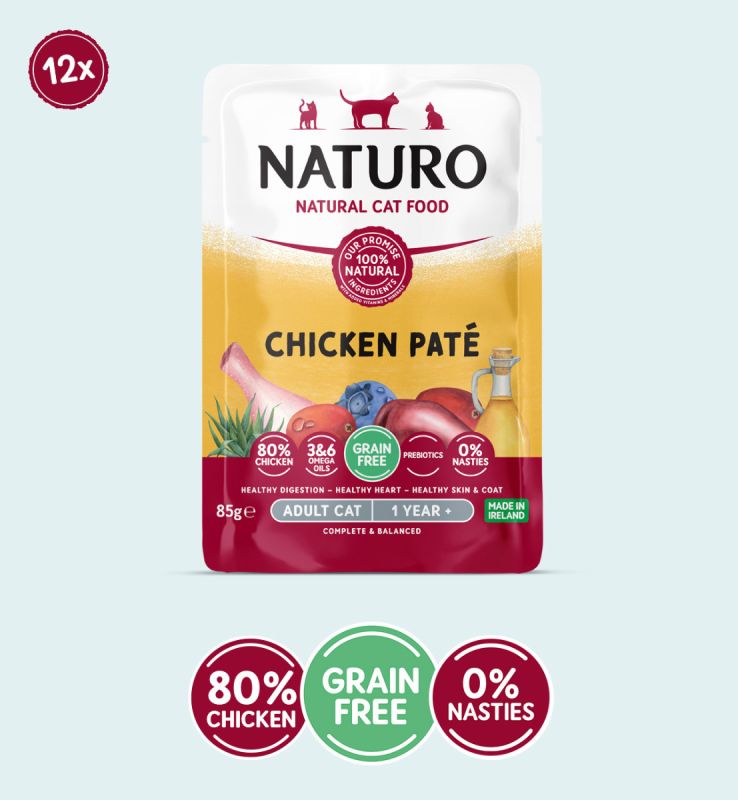
Chicken
Naturo Cat Chicken Paté Pouch
85g x 12
Subscription Product